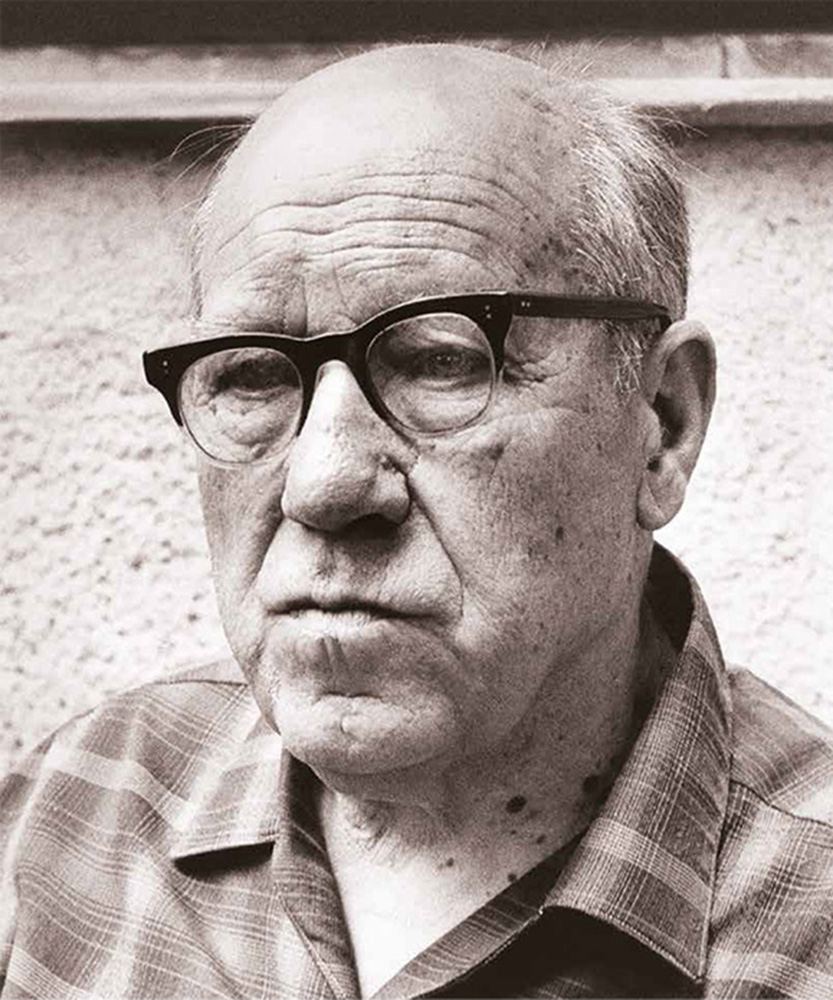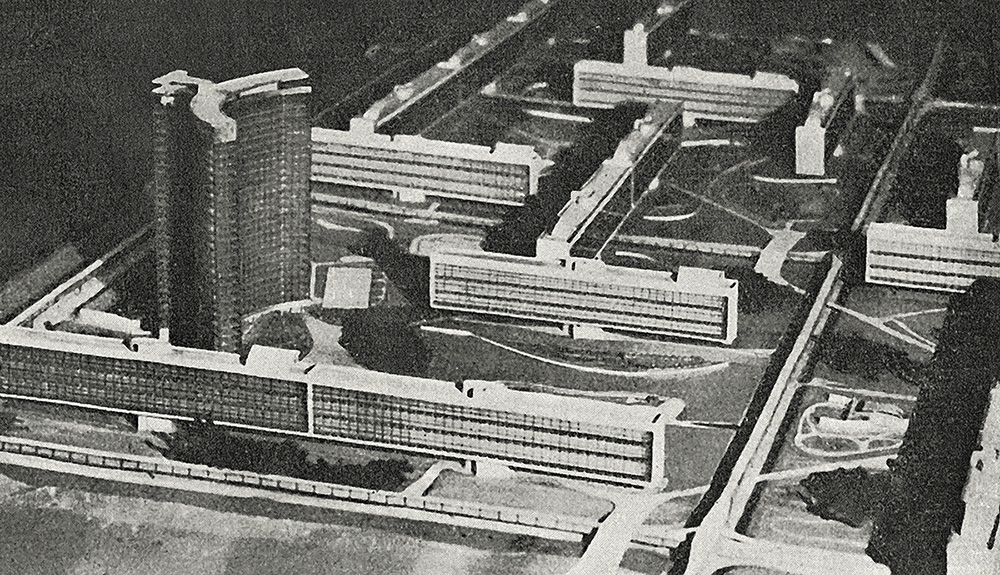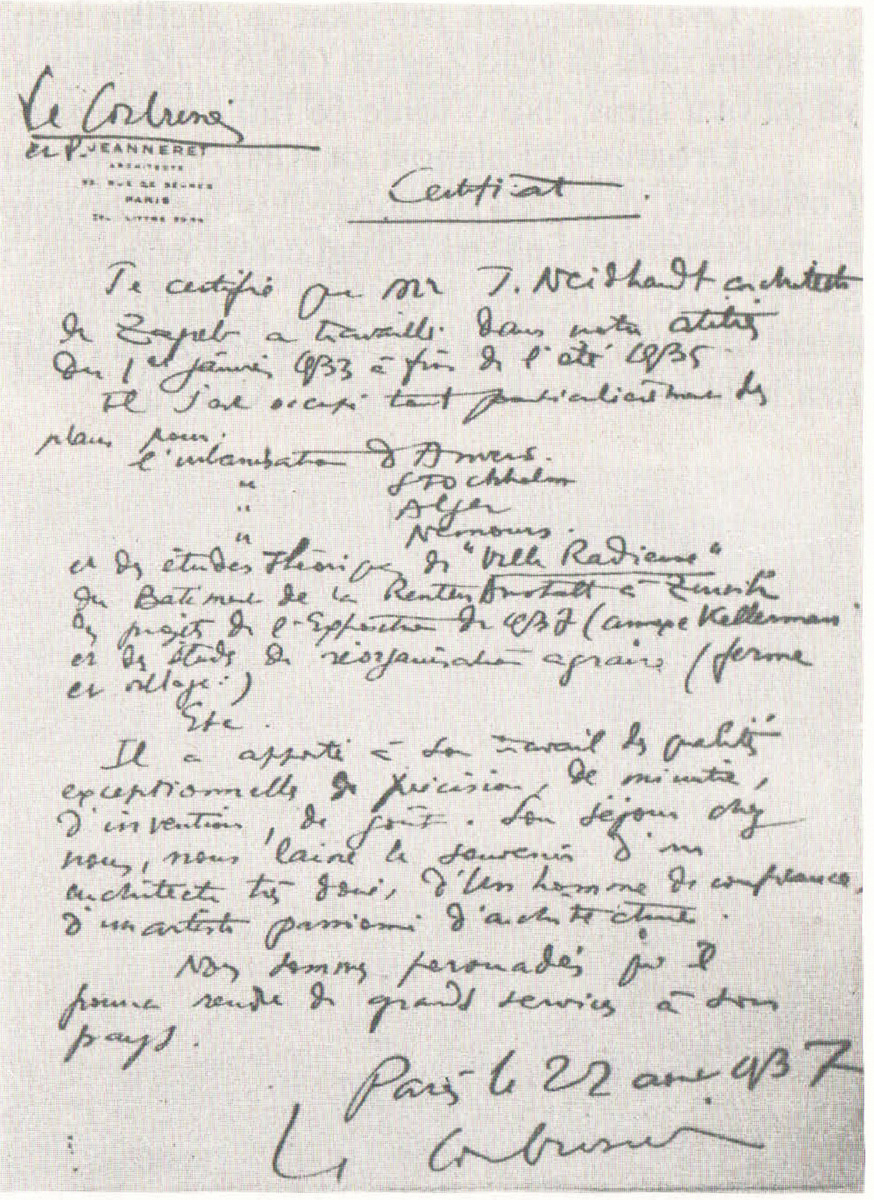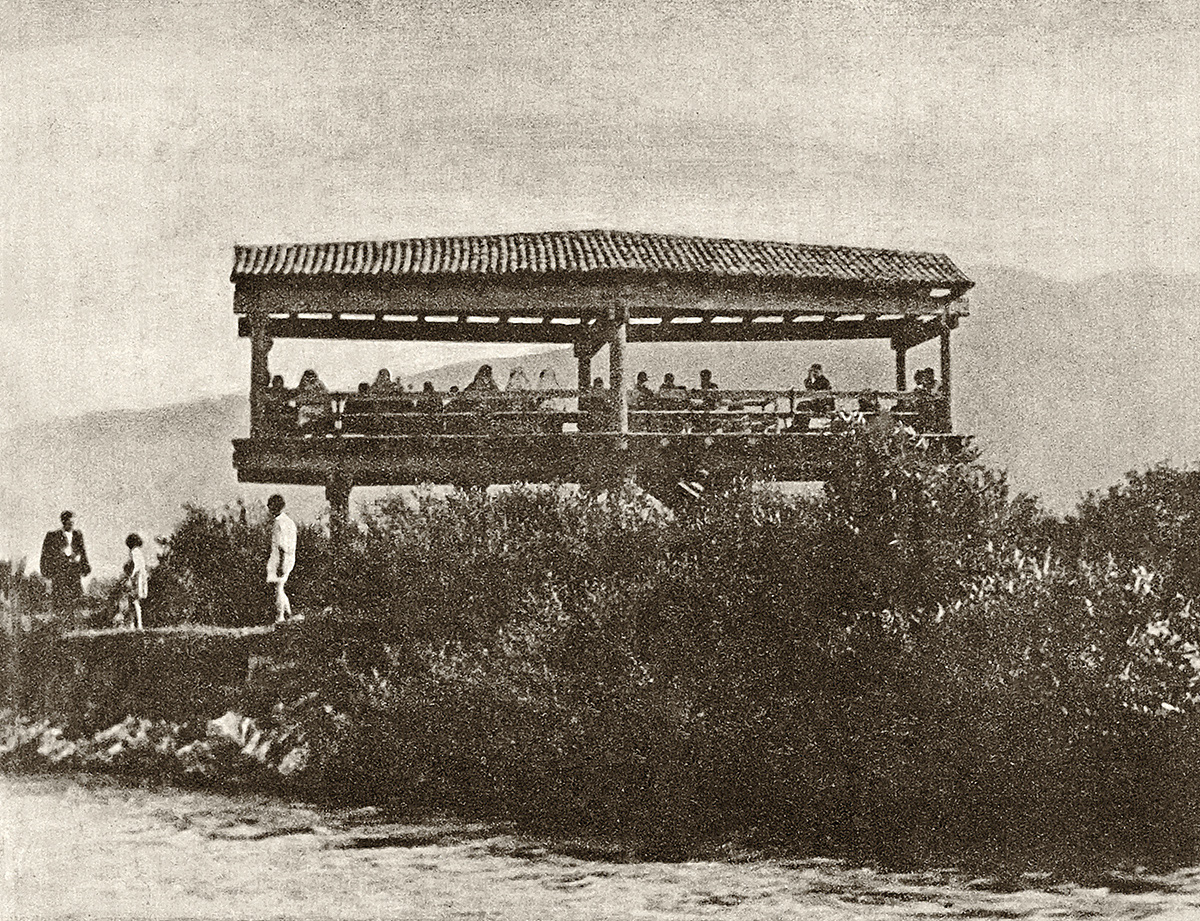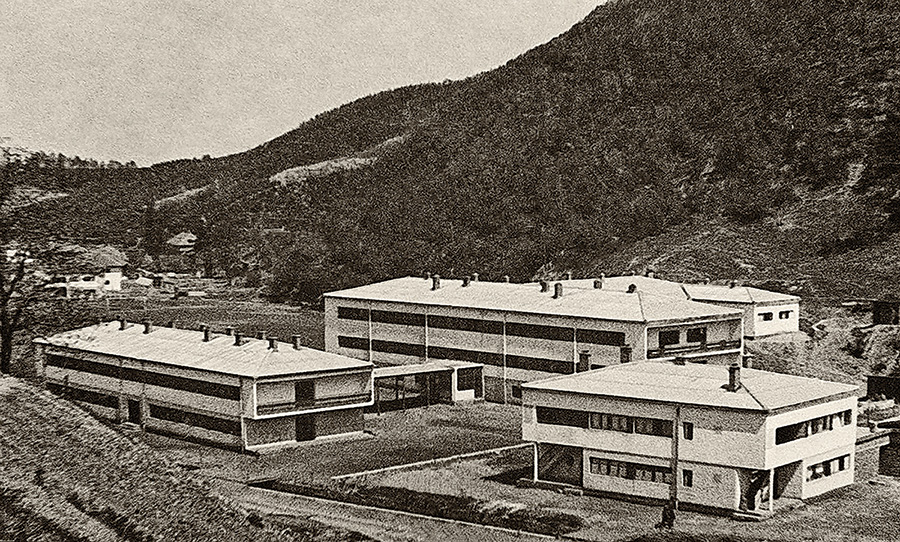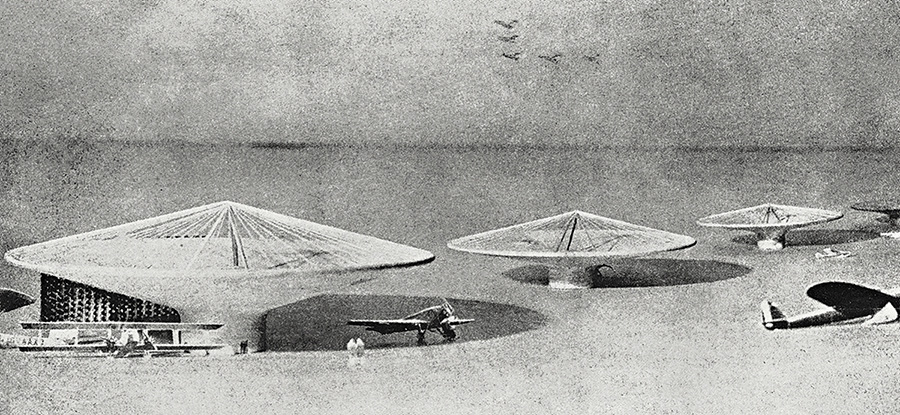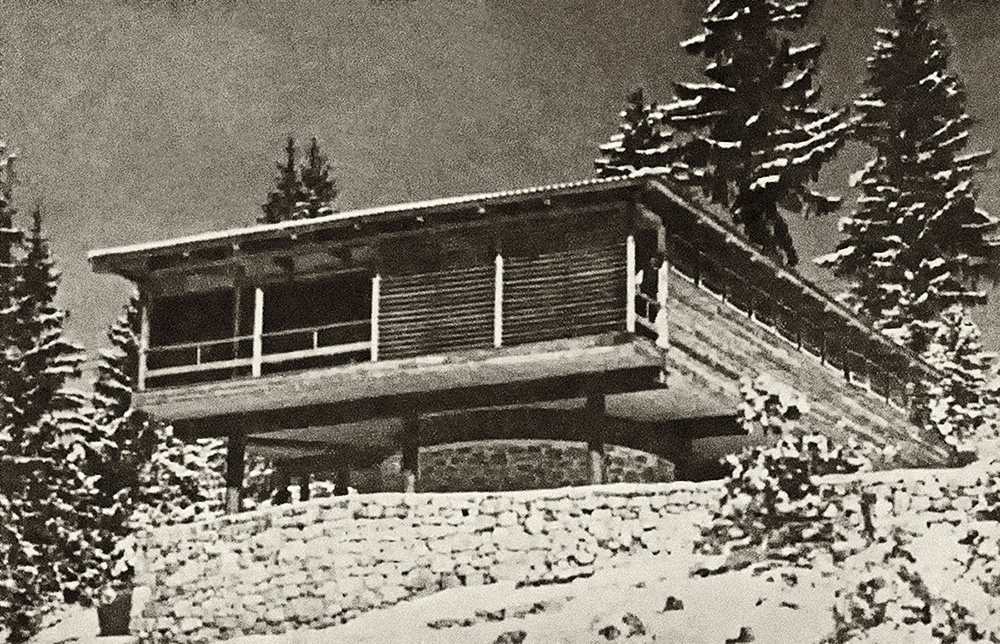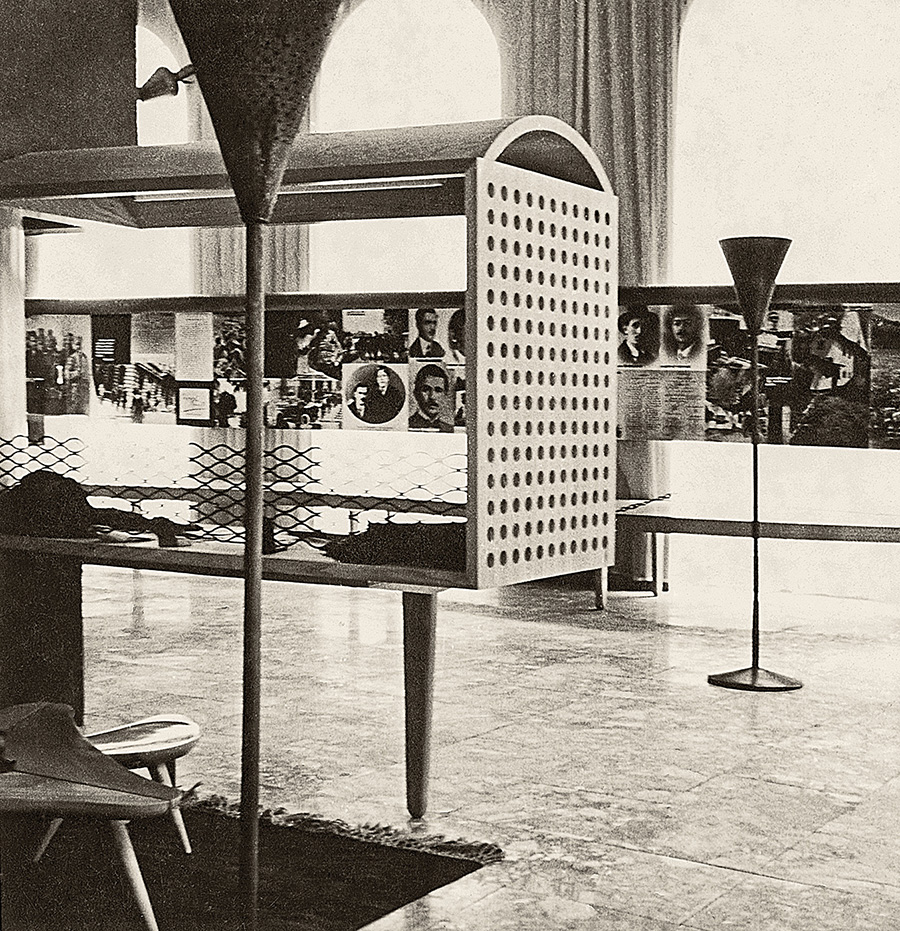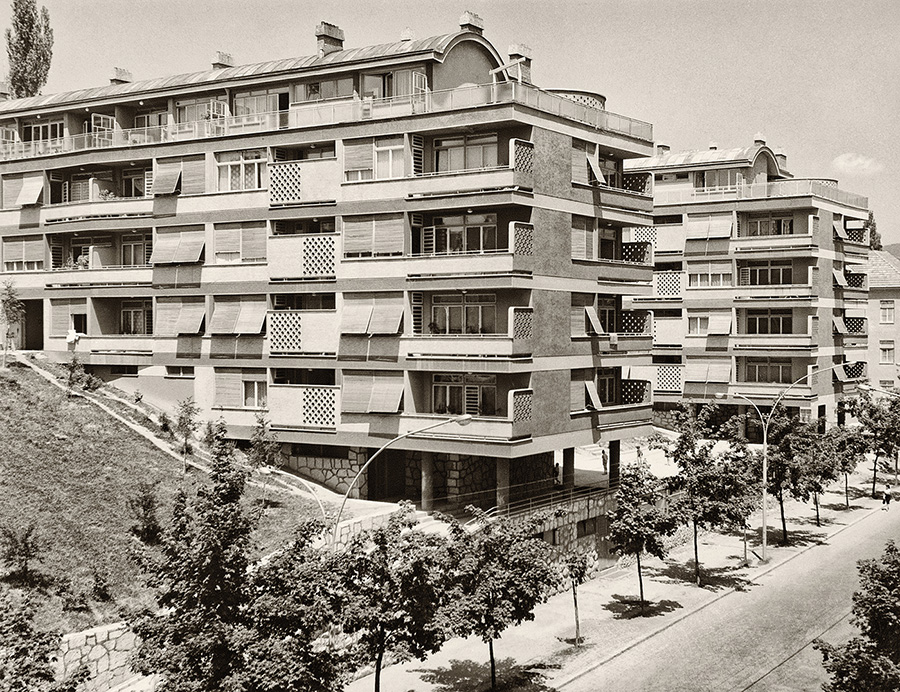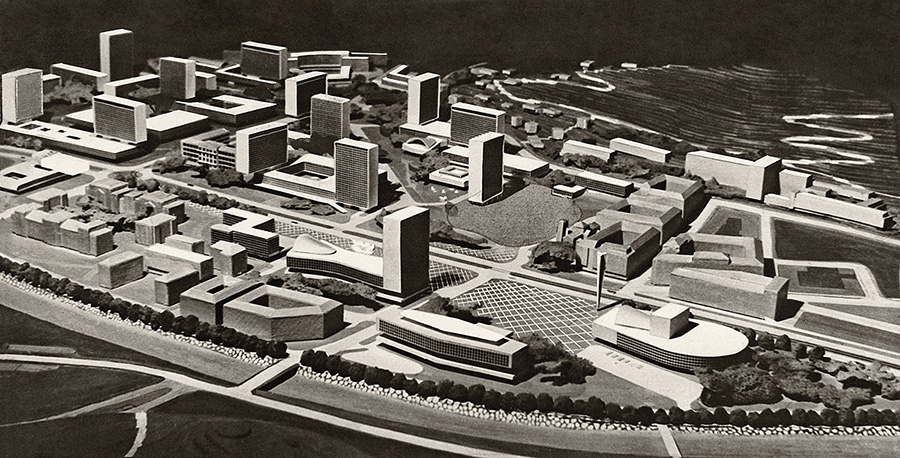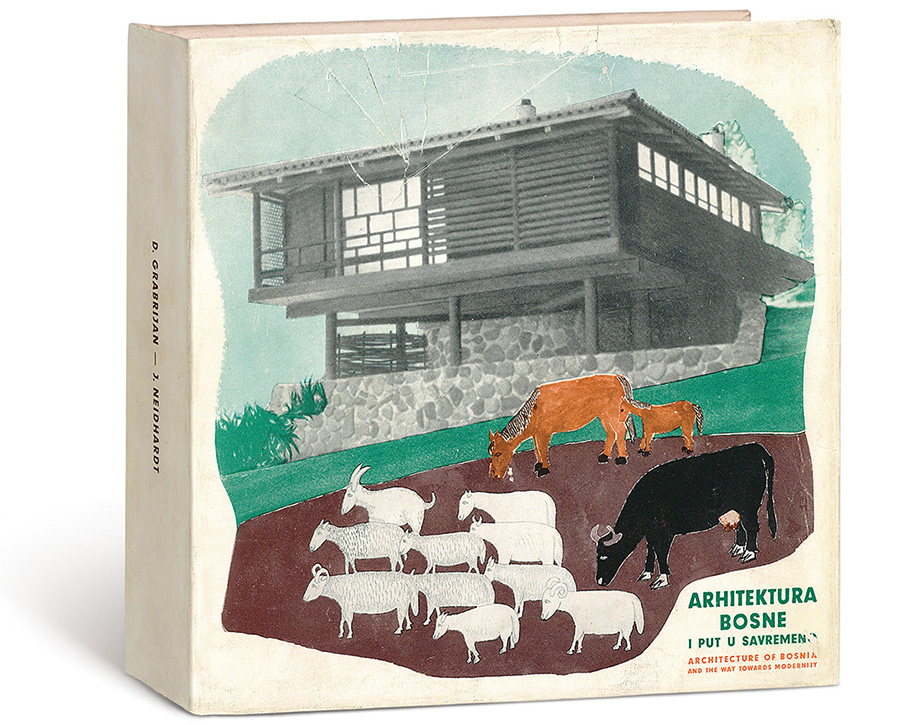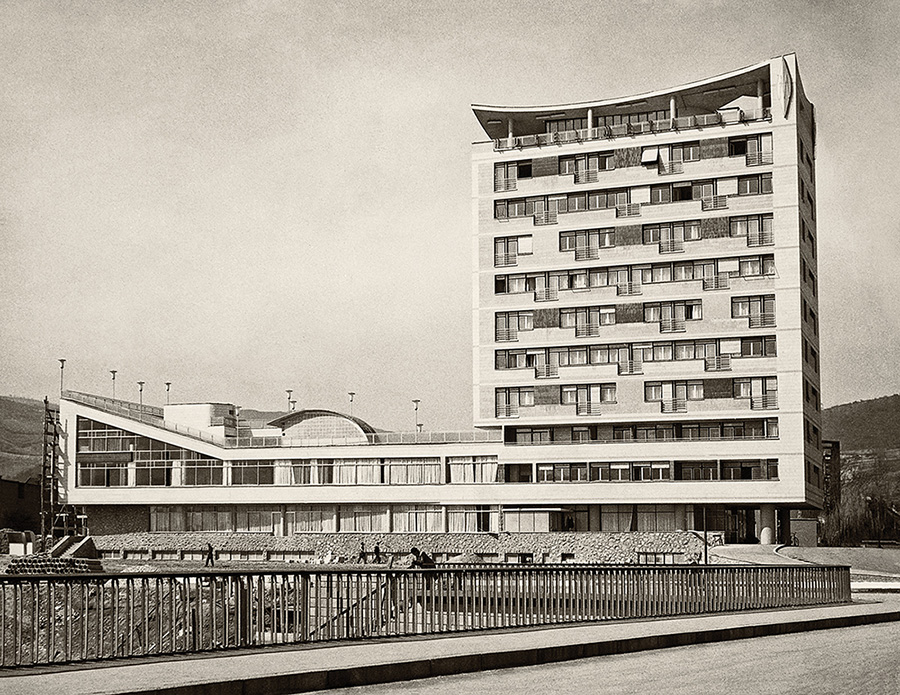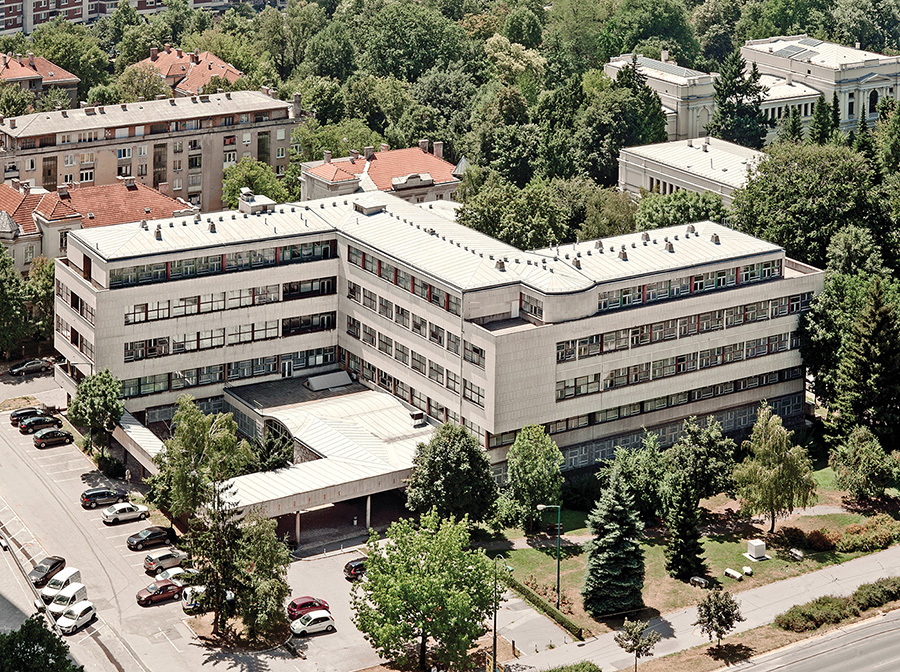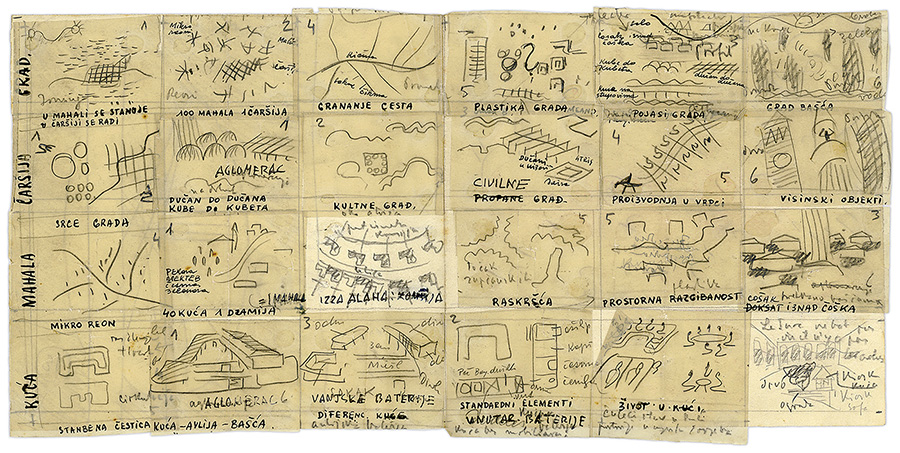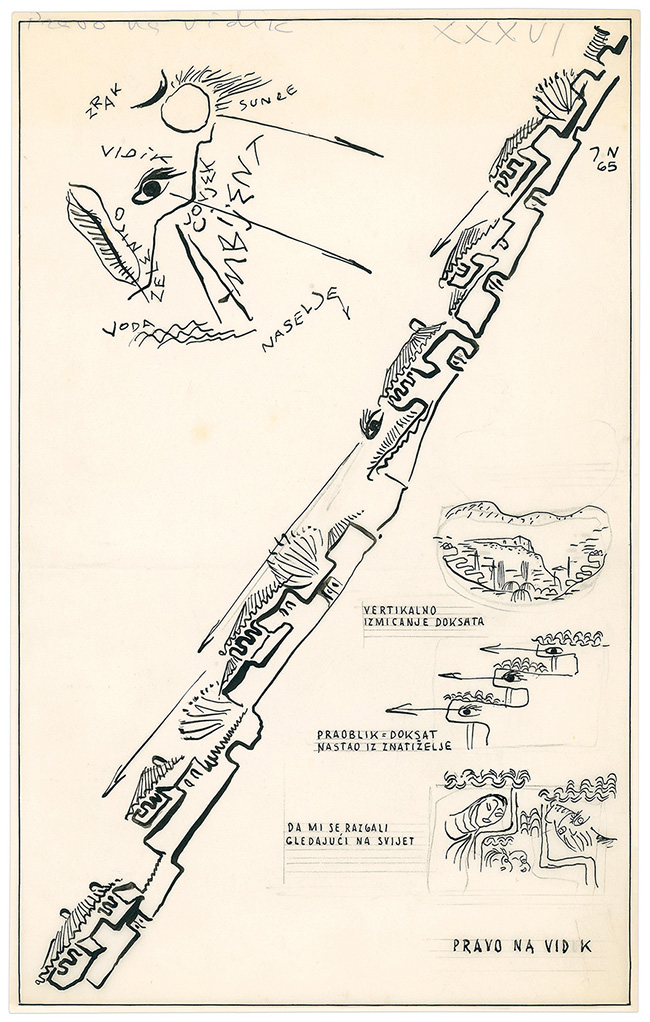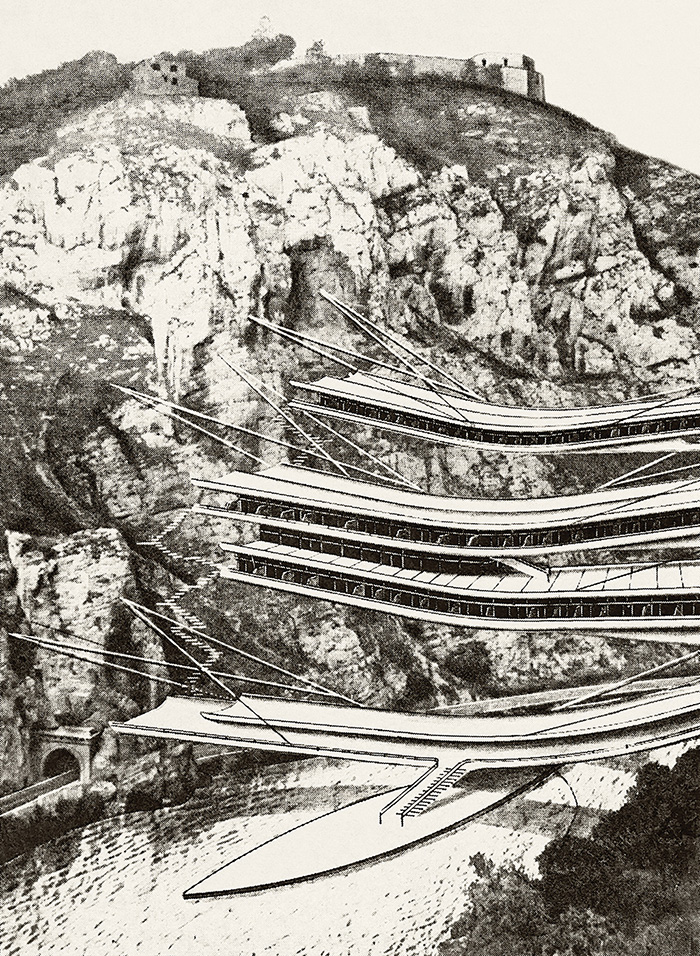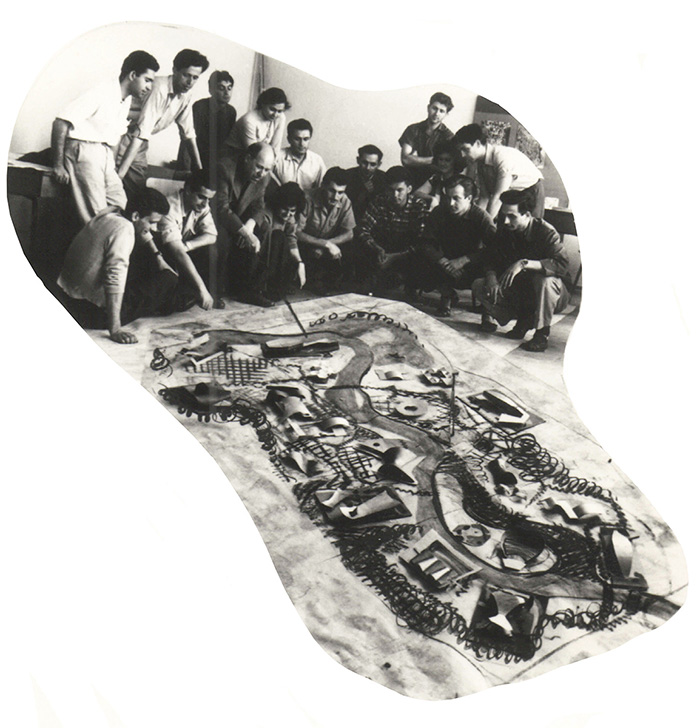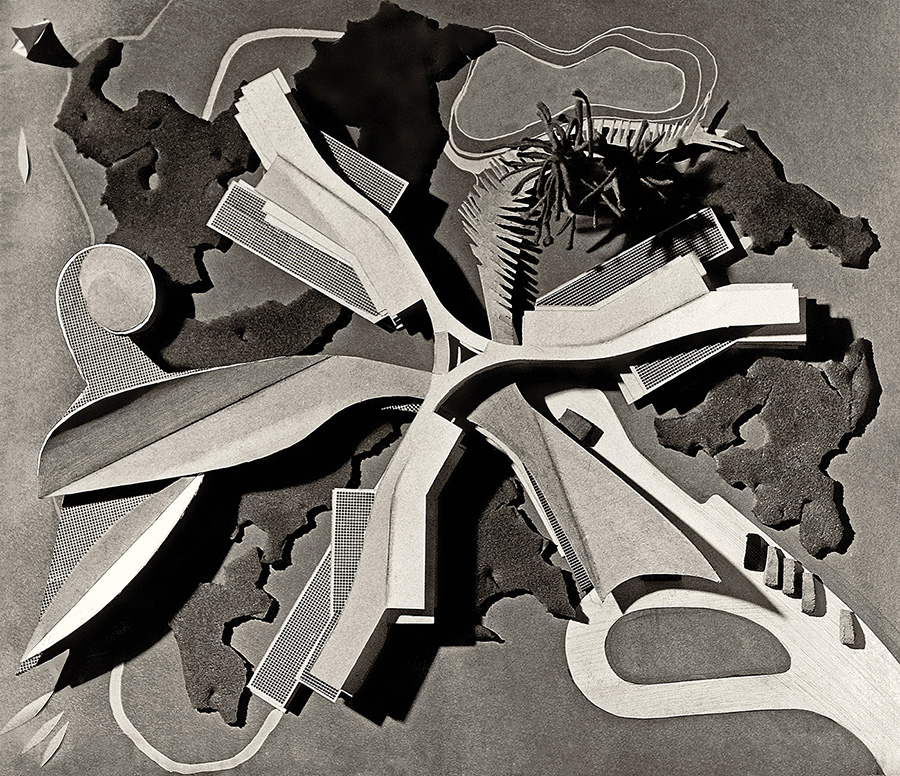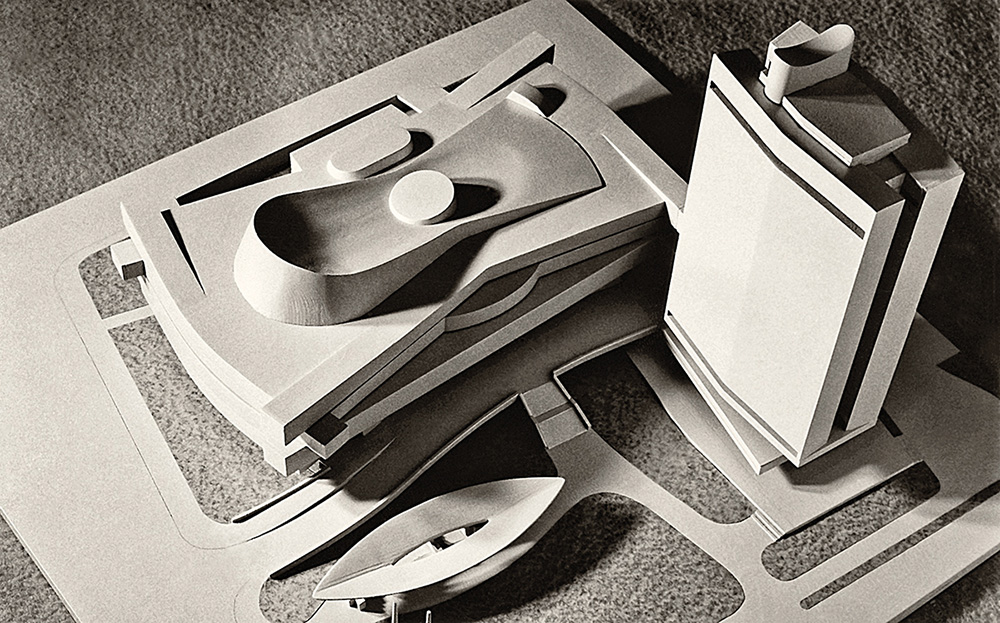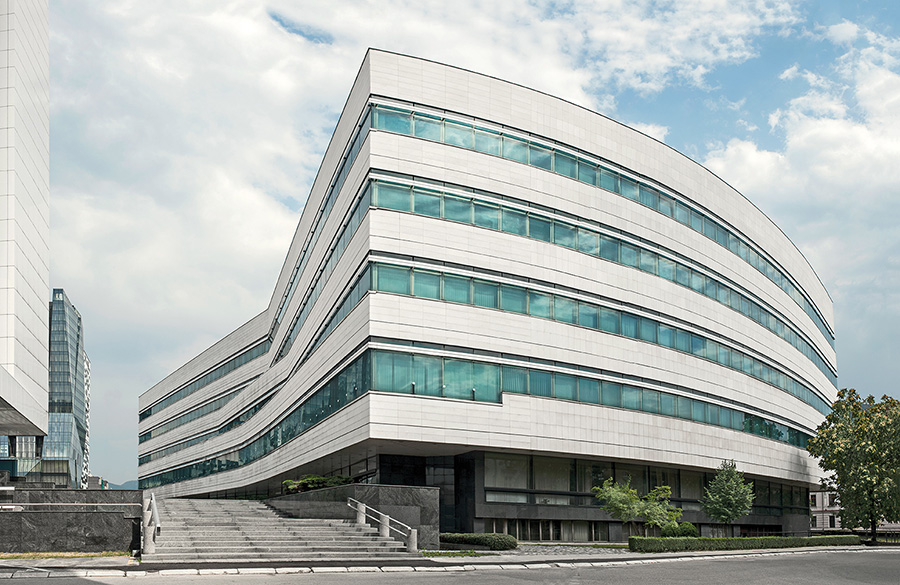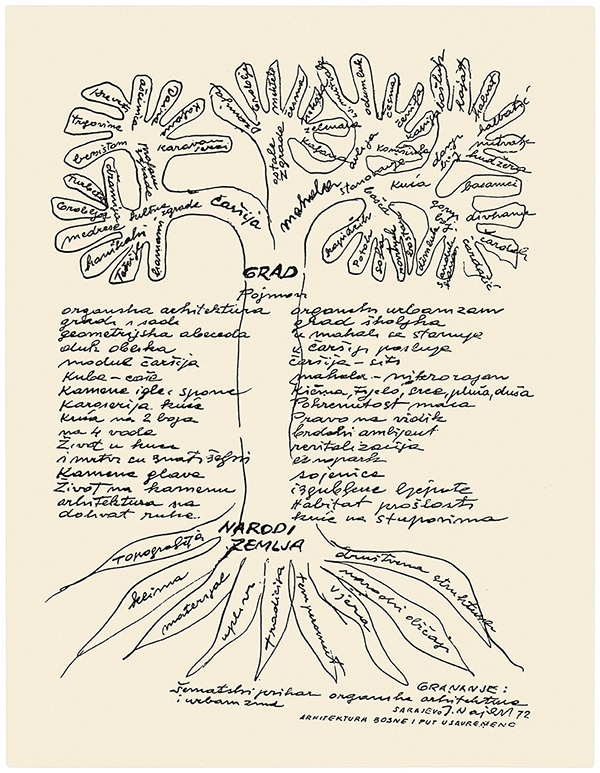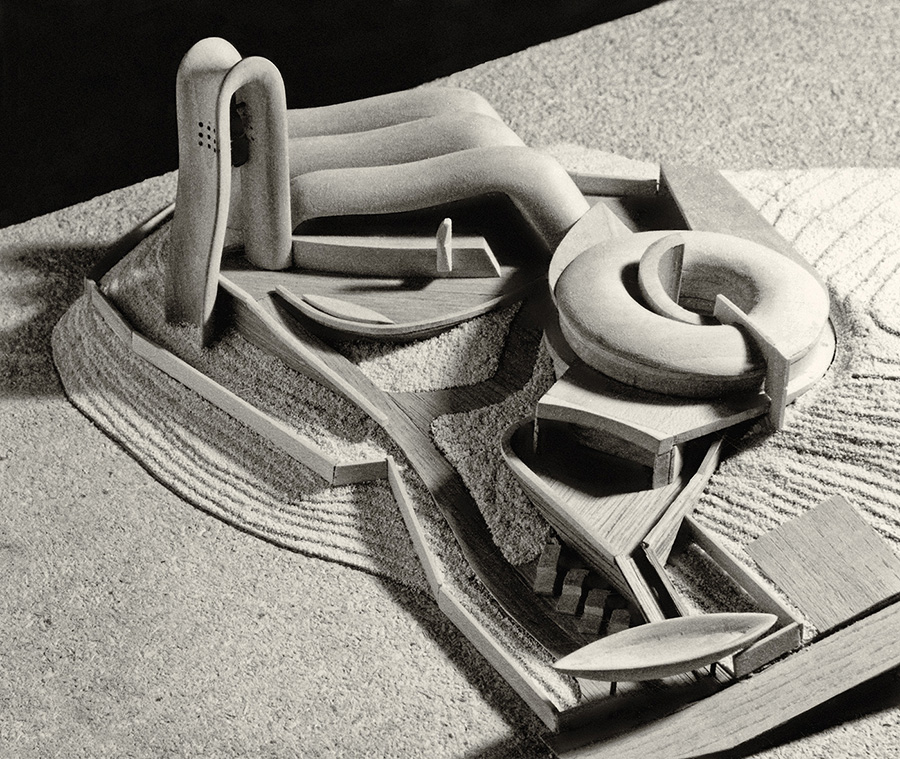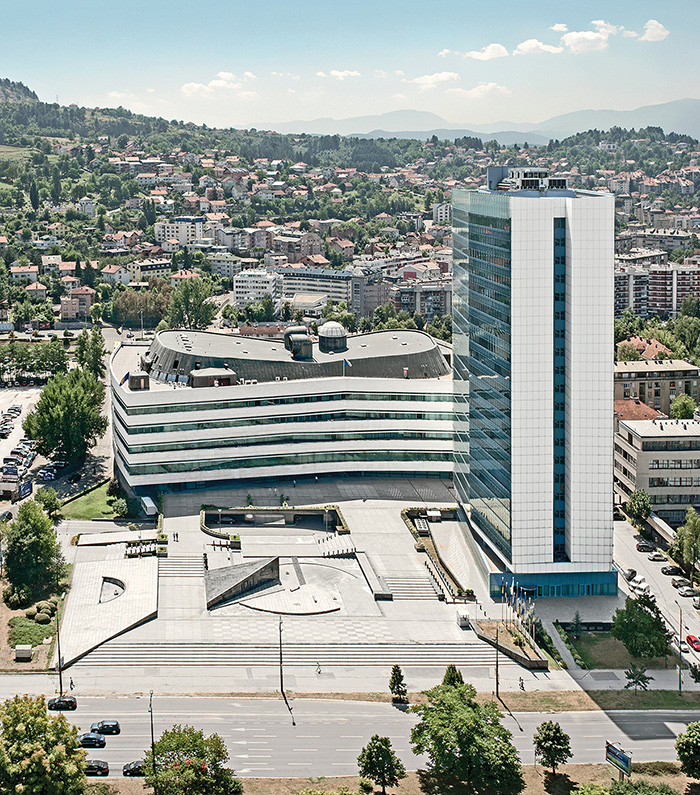Juraj Neidhardt was born on October 15, 1901, in Zagreb to his father Đuro and mother Anka. The Neidhardts were originally from Germany. Juraj Neidhardt’s grandfather, Franc Ksaver Neidhardt, moved to Zagreb in 1856 from Neiderstotzingen-Ulm in Württenberg. The family worked as butchers. Franc (Franjo) first managed the butcher’s business of the merchant Dragutin Angerer (Ilica no. 5) and after Angerer left his butcher’s shop, Franjo became an independent tradesman. In 1868 Franjo married Helena Weigellaufer[1]. They had three children: Dragutin, Đuro and Jelena. Dragutin was a state official and Đuro, the father of Juraj Neidhardt, continued with the family trade. The parents of Juraj Neidhardt had six children, one daughter Anka, and five sons: Antun a tradesman, Juraj, an architect, Nikola, a forestry engineer, Maks, a state official, and Franjo, also an architect[2].
Juraj Neidhardt attended primary school and the lower years of grammar school in Zagreb. He attended the secondary technical school, the construction department in 1920 (1916-1920, he attained the “certificate of maturity” (matura) on October 6th, 1920).
In 1920 he started studying architecture at the Meisterschule für Architektur na Akademie der bildenden Künste in Vienna from which he graduated in 1924 (director Peter Behrens). As an excellent student he received the Liliennthalt award for his project “A.E.O. Airport.”
After he graduated, he returned to Zagreb and worked as an apprentice with the architect Rudolf Lubynski (Lubynski and Holjac). One year later he moved back to Vienna. He spent a short period of time with the architects Peter Behrens and Ernst Lichtblau. Ernst Lichtblau was a student of Otto Wagner and a follower of modern trends. He spent some time in Bosnia in 1904, when he wrote his studies on Bosnian houses, and his proposal for the Conceptual Design for a Villa for Bosnia.[3] At that time Neidhardt collaborated on the design and execution of the Benedictine College of St. Peter in Salzburg. After he returned to Zagreb, he worked on residential building projects with the architect Lava Kalde.
By invitation of the Archbishop of Zagreb, Antun Bauer, he worked on the Archbishop’s seminary project, a complex of buildings with a school, including teaching departments, a gymnasium, a boarding school, administrative facilities, an observatory and a two-storey church. The project was realized by 1929. By the time the construction was completed, he had contracted tuberculosis. He moved to Switzerland, to the sanatorium in Davos. He designed a new sanatorium. When he returned to Zagreb, he took part in competitions (he won second prize for the House of the Croatian rowing club in Zagreb, for the so-called “Zakladni blok” (Foundation block), for the urban design of Terazije in Belgrade). Also, he visited a major exhibition of modern architecture in Stuttgart.
In 1930 he took part in an international tender for the creation of a general basis for the construction, extension and regulation of the City of Zagreb. In March 1930 he went to Berlin and worked for Peter Behren’s firm and stayed there for more than two years. He worked as an associate on several projects: the synagogue in Zlin, Czech Republic, the Gauz villa in Cronberg in Frankfurt, the Ring der Frauen house in Berlin and the plan for Alexanderplatz in Berlin in 1932.
From January 1, 1933 to August 1935 he was an associate at Le Corbusier’s firm at 35 Rue de Severes in Paris. He was involved in many urbanization projects in Antwerp, Stockholm, Algeria, Namur, for Ville Radieuse. He also worked on many tenders in Yugoslavia, for Sarajevo, Bata Zlin - Borovo Selo, and Zagreb.
He participated in a group of young architects gathered around the ideas of Le Corbusier, who presented their work in the Cahiers d’Art magazine in 1935, after which he returned to Zagreb. He participated in a dozen competitions and was awarded second prize at the international competition for the Paris Pavilion.
In cooperation with the architect Dušan Grabrijan in 1936 he organized solo exhibitions, mainly of his urban planning projects in Sarajevo, Ljubljana, Belgrade and Zagreb. He worked on several urban plans and travelled to Novi Sad, Sarajevo and Belgrade. He conducted intensive correspondence with Dušan Grabrijan, who published articles on Neidhardt’s work.
Not long after that he got married to Prof. Savka Jovanović from Bosanski Novi, whom he met in Paris while she was studying the Romantic Languages. Upon their return to Zagreb they lived in the Neidhardt family home, and when they arrived in Sarajevo they lived on the ground floor of the home of the Academy artist Mica Todorović. That was when Ismet Mujezinović painted the portrait of Savka Jovanović as Madame Neidhardt. The war pulled them apart in 1942. His first job was at the Central Hygienic Institute in Belgrade (June 1, 1937 to October 31, 1938). He worked on projects for Ilidža and passed the state exam and validated his diploma at the Technical Faculty in Belgrade in 1938.
As early as 1939 he competed for a position as a teacher at the Faculty of Architecture in Zagreb. He participated in the exhibition “Half a Century of Croatian Art” in Zagreb. On March 6, 1939 he was employed by the “Jugočelik” company in the Zenica mining basin, in its headquarters in Sarajevo as an urban planner and architect for workers’ settlements. He designed the houses and settlements in Ilijaš, Breza, Zenica, Ljubija and Vareš, which were partly finished in 1939 and partly after the war.
From 1945 to 1947 he worked in the Ministry of Construction of BH with several directives – the regulation of Slavonski and Bosanski Brod, Bihać, Fojnica, Banovići and Sarajevo. He continued his work on workers’ settlements. He had Grabrijan’s support in professional journals, and together they published a professional publication entitled “Sarajevo and its Followers”.
During the construction of the workers’ settlements in Kralup in Vareš Majdan in Vareš, he met Mrs. Mili (Ljudmila, a widow, a native of Nanut, originally from Slovenia) who he married and in 1945 they had a daughter named Tanja (Tatjana). His wife Mili supported him in his architectural work through translating and correspondence work.
Some colleagues held it against him that he had worked during the NDH (the Independent State of Croatia), so he was under investigation and was detained. He proved that he was only involved in professional work and that he was close to left-wing artists and intellectuals from the Collegium Artisticum circle. Nevertheless, he was deprived of his involvement in architectural and urban planning, and was asked to work on designing structures for various events: stands, billboards and posters. After a probation period, he entered the phase of intense urban planning and architectural design and participating in tenders. The dominant part of his work in the 1950’s were the urban solutions for Baščaršija in Sarajevo, the interpolation and the problem of the dialogue between the architectural and urban heritage and modern architecture and urbanism. This was followed by his urban design solutions for Mostar, Zenica and Sarajevo, designs of public architectural facilities, higher education institutions and the design of Marijin Dvor and the National Assembly in 1955.
In 1952 he was elected as a teacher at the Technical Faculty in Sarajevo and in 1953 he earned the title of associate professor in the subject “Composition and Interiors”. He was chosen to be a full professor in 1962 when he became a correspondent member of The Royal Institute of British Architects (January 22, 1953, RIB). He was chosen to be a correspondent for the Yugoslav Academy of Sciences and Arts in Zagreb on June 17, 1963. He was elected a regular member of the Department of Technical Sciences of the Academy of Sciences and Arts of Bosnia and Herzegovina on February 23, 1978. Five years earlier, on January 1, 1973, he retired. Academician Professor Juraj Neidhardt died on July 13, 1979.
* * *
In addition to the large number of texts he published in the daily and periodical press, in the 1940’s and 1950’s Neidhardt worked with the architect and professor at the Technical School in Sarajevo, Dušan Grabrijan, in correspondence after Grabrijan left Sarajevo, and then alone after Grabrijan’a death in 1952. In a major study on architectural heritage and the possibilities of its interpretation in contemporary architecture, published under the title Architecture of Bosnia and the Way to Modernity (Državna založba Slovenije and PR Bosnia and Herzegovina, 1957).
During his lifetime, Academician Juraj Neidhardt received a number of medals and awards.
Medals:
1st class Medal of Labour, Belgrade, 1959.
Medal of the Republic with a Silver Wreath, Belgrade, November 23, 1970.
Medal for Services to the People with a Golden Star, Belgrade, 1976.
Charter of the Association of Architects of Yugoslavia, Belgrade, 1964.
Memorial Plaque of the City of Sarajevo, 1965.
Plaque of the Faculty of Architecture of the University of Zagreb, 1969.
Charter of the Council of the Institute for Material Testing and Construction of the Faculty of Civil Engineering of the University of Sarajevo, 1972.
Jubilee Medal with a Diploma from the Association of Conservatives of Yugoslavia, Belgrade, 1975
Charter of the Museum of the City of Zenica, 1977.
Prizes:
Sixth of April Award of the City of Sarajevo, 1960.
July 27 Award with Diploma, 1964.
July 27 Award with Diploma, 1976 (Collectively for Baščaršija)
ZAVNOBiH Award, with Diploma, November 25, 1978.
* * *
On October 15, 2001, Academician Zlatko Ugljen organized a celebration of the centenary of the birth of Academician Juraj Neidhardt. The following gave presentations on the life and work of Academician Juraj Neidhardtat at the gathering in the Academy of Sciences and Arts: Dr. Jelica Karlić-Kapetanović, dia, Prof. Dr. Ibrahim Krzović, art historian, and Prof. Dr. Hamdija Salihović opened the exhibition of the selected works of Juraj Neidhardt. The programme and the content of the gathering for the centennial of birth of Juraj Neidhardt were presented by Prof. Ugljen in a catalogue produced for the occasion. Through the inspiration and effort of Prof. Zlatko Ugljen a memorial plaque was placed on the house in Tepebašina 9 in Sarajevo where the Academician Juraj Neidhardt lived with his family from his arrival in Sarajevo until his death in 1979.
With the consent and permission by Tatjana NeidhardtFrom monograph: Juraj Neidhardt – Architect, Urban planner, Theoretician, Educator, Publicist
Publisher: Academy of Sciences and Arts of Bosnia and Herzegovina, Sarajevo, 2019
[1] Ivan Ulčnik, Naši stari zagrebački privrednici (Our Old Zagreb Businessmen), Zagreb, nos. 7-8, 1935, pp. 215-218; Jelica Karlić-Kapetanović, Juraj Najdhart – život i djelo (Juraj Najdhart- Life and Work), monograph, Veselin Masleša, the Cultural Heritage Library, Sarajevo, 1990, pp. 1-3.
[2] J.Karlić-Kapetanović, idem, page 10
[3] Ibrahim Krzović Arhitektura Secesije u Bosni I Hercegovini (Secession Architecture in Bosnia and Herzegovina), Sarajevo Publishing, Cultural Heritage Library, Sarajevo, 2004, pp.190-192
